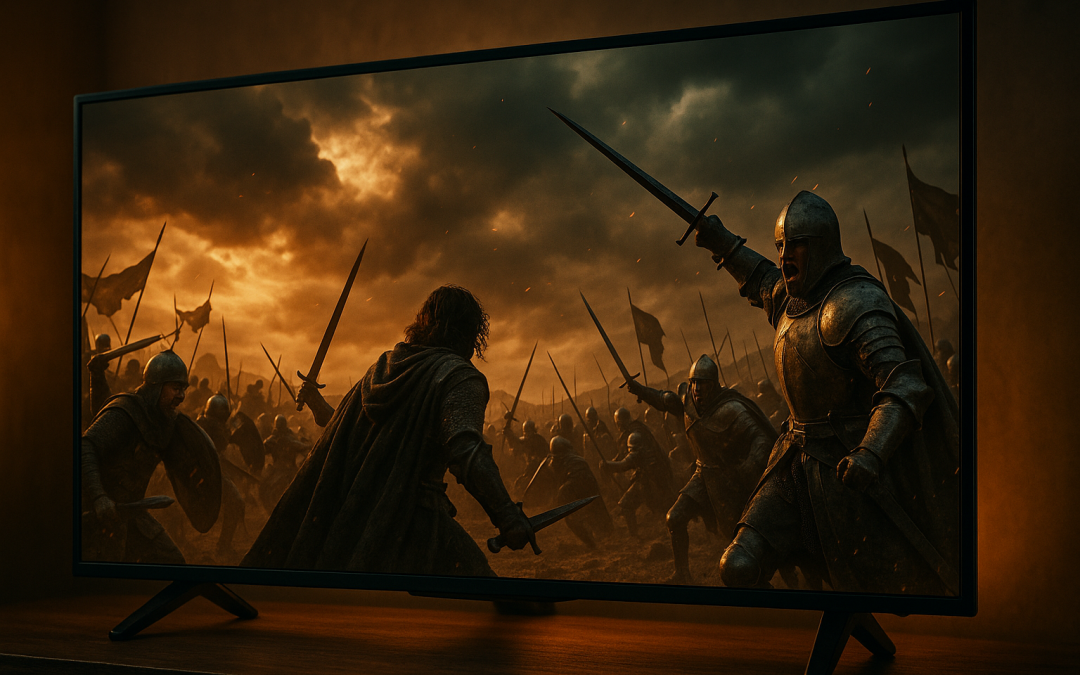High fantasy, with its sprawling invented worlds, magic, and epic stakes, has long been a staple of literature. In recent years, television has increasingly embraced this genre, adapting beloved fantasy novels into series that bring those intricate worlds to life.
From Western classics to international tales, and in both live-action and animation, these adaptations strive to capture the spirit of their source material while appealing to new audiences.
Below, we go into several notable examples, examining how each originated on the page and evolved on screen, and how critics and fans have received them.
The Lord of the Rings: The Rings of Power
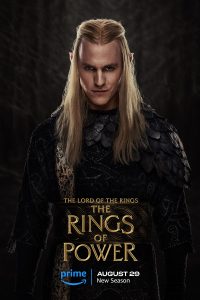 J.R.R. Tolkien’s novels are foundational to the high fantasy genre, and Amazon’s The Rings of Power draws from the mythic Second Age of Middle-earth.
J.R.R. Tolkien’s novels are foundational to the high fantasy genre, and Amazon’s The Rings of Power draws from the mythic Second Age of Middle-earth.
Rather than adapting a single novel, the series is based on the appendices of The Lord of the Rings and other Tolkien writings, weaving a story set thousands of years before The Hobbit. In the literature, this era is chronicled in fragments – outlines of history, legends of Númenor, the forging of the Rings, and the rise of Sauron.
Tolkien’s Second Age is vast and episodic, which gave the showrunners both freedom and challenges: they had to construct a coherent narrative largely from appendices while staying true to the epic tone and rich lore that make Tolkien’s legendarium quintessential high fantasy.
The result is an original story that introduces new characters (such as the mysterious Halbrand) alongside younger versions of familiar figures like Galadriel and Elrond.
On screen, The Rings of Power takes liberties to fit Tolkien’s millennia-spanning chronology into a TV drama. The show compresses the timeline dramatically, condensing events that unfolded over centuries into a single lifespan so that human characters can participate.
This creative compression – necessitated in part by legal rights limiting the use of The Silmarillion material – means that the series invents connections and sequences not found in the texts. For example, the forging of the Rings, the downfall of Númenor, and the advent of Sauron’s war are portrayed as contemporaneous, whereas in Tolkien’s writings these events were separated by long epochs.
The show also introduces entirely new plotlines (such as the Southlander storyline) and original characters like Halbrand, whose true identity becomes a central twist. These changes have been controversial for some Tolkien purists. Amazon’s writers have stated that they aimed to capture the spirit of Tolkien’s world even when altering specifics – much as Peter Jackson did in the earlier film adaptations.
The series strives to honour the source by showcasing Númenor’s grandeur, Elven and Dwarven cultures, and the lingering magic of Middle-earth’s earlier ages, even as it makes narrative decisions Tolkien himself never explicitly wrote.
The reception of The Rings of Power has been notably polarised. On one hand, critics have praised its ambitious scope and production values – the show boasts an 84% average rating from professional reviewers. Many applauded the “exquisitely constructed” visuals and the effort to make Tolkien’s deep lore accessible to a broad audience. On the other hand, a segment of the audience reacted negatively, leading to what Amazon described as “review bombing” by some disgruntled fans.
Upon release of Season 1 in 2022, the series saw an 84% critic score but only a 38% average audience score on Rotten Tomatoes, reflecting a sharp split. Some long-time Tolkien fans took issue with deviations from the beloved canon and the invention of new story arcs. Unfortunately, a vocal minority even targeted the show’s diverse casting with racist attacks, prompting the cast to issue a statement affirming that “BIPOC people belong in Middle-earth”.
The show’s lavish budget and high stakes also made it a lightning rod in the so-called “culture war” over faithful adaptations: Amazon went so far as to delay user reviews to filter out bad-faith negativity.
Still, many viewers have enjoyed the series on its own terms, and it attracted huge viewership numbers. The Rings of Power remains an audacious attempt to visualise Tolkien’s sprawling Second Age – winning admiration for its ambition and beauty, even as it navigates the pitfalls of adapting a literary legend.
Robert Jordan’s The Wheel of Time
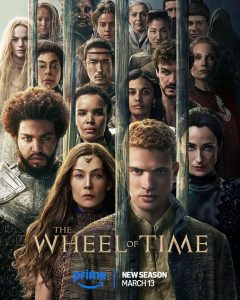 Robert Jordan’s The Wheel of Time series spans 14 hefty novels (completed by Brandon Sanderson after Jordan’s passing) and is a cornerstone of late-20th-century high fantasy.
Robert Jordan’s The Wheel of Time series spans 14 hefty novels (completed by Brandon Sanderson after Jordan’s passing) and is a cornerstone of late-20th-century high fantasy.
Set in a sprawling world with its own intricate history, magic system, and a vast cast of characters, the books are famous for their elaborate world-building – from the Aes Sedai sorceresses to the many cultures and nations that protagonist Rand al’Thor encounters on his prophesied journey.
Often compared to Tolkien in scope but distinct in its cyclical concept of time and a matriarchal magic order, the Wheel of Time novels exemplify high fantasy’s epic breadth.
Bringing such a colossal saga to television was a bold venture by Amazon Prime, which launched The Wheel of Time series in 2021, hoping to capture Jordan’s dedicated fanbase and the post-Game of Thrones appetite for fantasy epics.
Adapting the first book (The Eye of the World) and beyond, the show had to streamline and modify many elements to fit the TV format. With over a dozen 700+ page novels of content, compression was inevitable.
Season 1 condenses the events of the first book and incorporates foreshadowing from later books. It makes significant changes: for instance, the show introduces a major deviation by suggesting that the identity of the Dragon Reborn (the saviour-or-destroyer figure) is uncertain and could be any of the young heroes – male or female.
In Jordan’s books, the Dragon is explicitly male (due to the gendered nature of magic in that world), but the show’s alteration modernises this aspect, “updating The Wheel of Time for the 2020s” and moving away from the books’ strict gender binary. The adaptation also aged up the Edmond’s Field main characters slightly and gave them more backstory, sometimes inventing new motivations or relationships (for example, Perrin is given a wife in Episode 1 – a tragic addition not found in the novel – to add emotional weight to his journey). Entire subplots were excised or postponed; the dense world-building was pruned to avoid overwhelming new viewers.
Notably, Season 1 added an original storyline involving the False Dragon Logain, expanding on a minor early plot point to better introduce the political and magical stakes. These changes, along with a faster pace, meant some beloved scenes and characters from the book (such as the travelings of Elyas or the detailed exploration of each locale) were reduced or omitted. Showrunner Rafe Judkins has emphasized that the goal is to capture the core story and spirit of The Wheel of Time while making the narrative work for television – a balancing act of faithfulness and invention that every adaptation must negotiate.
Reception to The Wheel of Time has been generally positive, albeit with reservations. Critics have noted that the series “succeeds admirably in making Robert Jordan’s epic approachable for the uninitiated,” according to Rotten Tomatoes’ consensus. Season 1 carries an 81% critics’ score on Rotten Tomatoes, indicating broadly favorable reviews.
Many praised the show’s ability to convey the expansive lore in a digestible way and highlighted the strong performances (Rosamund Pike’s portrayal of the Aes Sedai Moiraine was particularly lauded). For long-term fans of the novels, however, the reception was more mixed. Some welcomed the adaptations’ streamlining as necessary, but others – the self-described “book purists” – were disappointed by the liberties taken. There was pushback about the altered character arcs and lore tweaks; for instance, certain devotees felt the series “removed or altered so much… in the name of modern-day sensibilities” that it no longer fully reflected Jordan’s vision.
On the other hand, many viewers new to the story found it an engaging fantasy adventure, and the show’s success in drawing a sizable audience led Amazon to renew it. By Season 2 (released 2023), fan chatter acknowledged improvements in faithfully depicting later books’ key events, though debates continue around the show’s deviations.
In short, The Wheel of Time has proven to be a solid hit rather than a runaway phenomenon: admired for bringing an immersive world to life, critiqued in places for uneven pacing and changes, but overall a valuable addition to TV’s fantasy roster – one that seems to be finding its footing as it spins the Wheel onward.
George R.R. Martin’s Game of Thrones
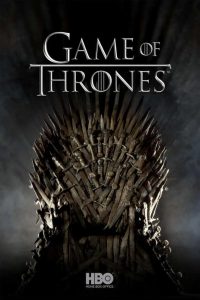 When HBO adapted George R.R. Martin’s Game of Thrones (2011–2019), it arguably created the biggest fantasy television phenomenon to date.
When HBO adapted George R.R. Martin’s Game of Thrones (2011–2019), it arguably created the biggest fantasy television phenomenon to date.
Martin’s novels, starting with A Game of Thrones (1996), are high fantasy with a twist: a gritty, political, and often brutally realistic approach to a medieval-inspired world. Magic and mythical creatures exist but were initially subdued, emerging gradually amid the war and intrigue of noble houses vying for the Iron Throne.
The source material is known for complex characters, moral ambiguity, shocking twists (no character’s safety is guaranteed), and an expansive scope that includes multiple continents and supernatural threats beyond the Wall.
HBO’s adaptation, launched in 2011, brought mainstream global audiences into this rich but harsh fantasy world – complete with dragons and White Walkers – and in doing so, it set a new benchmark for production quality and cultural impact in the genre.
In its early seasons, Game of Thrones was widely praised for fidelity to Martin’s first books. The showrunners followed the novels’ story arcs closely, condensing or merging only minor characters and subplots. Notably, they managed to put Martin’s often sprawling narrative on screen with remarkable clarity, benefiting from the author’s involvement and the inherently cinematic set-pieces (battles, duels, direwolf sightings) in the text. However, as the series progressed, it outpaced Martin’s writing – by Season 5 it had already adapted all published books, and from Season 6 onward the show forged ahead into uncharted territory, using outlines Martin provided but essentially diverging significantly from the (still-unfinished) novels.
This divergence had profound effects. Storylines that the books had left open were concluded in the show’s own way; for example, characters like Lady Stoneheart (present in the books) were omitted entirely from the series, and others were killed on TV despite surviving in print (e.g. Stannis Baratheon and Barristan Selmy, whose fates differ from the currently published books).
The show also simplified or cut some of the novels’ most complex plot threads – an infamous example is the absence of the book character Aegon Targaryen (a pretender to the throne), whose entire subplot was dropped, fundamentally altering certain story dynamics.
As Game of Thrones moved past its source, it “largely diverged from Martin’s books”, creating what The Atlantic described in 2016 as a “growing divide” between the narrative readers knew and the one viewers saw.
The television writers aimed to give the myriad characters a (relatively) quicker path to resolution, which meant streamlining motivations and condensing journeys – sometimes controversially so. By the final seasons, huge events (the defeat of the Night King, the political endgame in King’s Landing) were compressed into shockingly short sequences, and character arcs took sharp turns that many felt were insufficiently earned.
Critically and commercially, Game of Thrones soared to incredible heights but also endured a notorious fall in esteem by its conclusion. At its peak, the show was a cultural juggernaut: Seasons 1–4, in particular, received rave reviews for their writing, acting, and high production standards, earning numerous Emmy Awards (the series eventually amassed a record 59 Emmys across its run).
It wasn’t just a fantasy success; it was a television landmark that brought the genre fully into the mainstream. The global fanbase was fervent, engaging in endless theories and discussions – a testament to how vividly the adaptation realized Martin’s world. However, the final season (Season 8 in 2019) infamously prompted intense fan backlash. Critics’ reviews for the last episodes were mixed at best, and many fans were outright scathing.
Viewers complained that the pacing became rushed and that character decisions (such as Daenerys Targaryen’s drastic turn to destructive madness, or the rather anticlimactic handling of the White Walker threat) betrayed the careful development of prior seasons. Over 1.8 million disgruntled fans even signed a public petition demanding HBO remake Season 8 with “competent writers”, an expression of frustration at how the adaptation ended.
This backlash was unprecedented in its volume; for a show once universally lauded, the finale proved highly divisive. Still, it’s worth noting that Game of Thrones remained enormously popular through its end – the series finale drew tens of millions of viewers and the show continued to break Emmy nomination records even in its contentious final run.
In hindsight, Game of Thrones is remembered as both a triumph and a cautionary tale: a demonstration of high fantasy’s mass appeal and artistic potential on television, as well as a lesson in the perils of outpacing your source material and the difficulty of satisfying fan expectations in concluding an epic.
Andrzej Sapkowski’s The Witcher
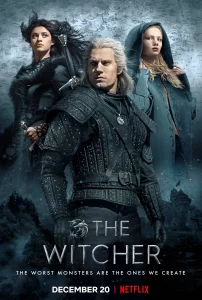 Polish author Andrzej Sapkowski’s Witcher saga – a series of short story collections and novels published in the 1990s – introduced readers to Geralt of Rivia, a brooding, white-haired monster hunter for hire in a dark, medieval fantasy world.
Polish author Andrzej Sapkowski’s Witcher saga – a series of short story collections and novels published in the 1990s – introduced readers to Geralt of Rivia, a brooding, white-haired monster hunter for hire in a dark, medieval fantasy world.
Blending Slavic folklore with wry humour and moral ambiguity, The Witcher books present a low–to–high fantasy mix: political intrigue and human conflicts are as central as the magic and monsters. The series gained global fame partly via a successful video game franchise in the 2000s, priming international audiences for Geralt’s adventures.
Netflix’s The Witcher series (debuting in 2019) took on the challenge of adapting this richly textured world. Showrunner Lauren S. Hissrich chose an anthology-like approach at first, drawing from Sapkowski’s short stories in Season 1 to introduce Geralt’s character and the world’s key players (sorceress Yennefer and princess Ciri) before moving into the main novel saga in subsequent seasons.
The adaptation made several notable storytelling choices. Season 1 embraced a non-linear narrative structure – weaving together Geralt’s standalone monster-hunting tales with Yennefer’s origin and Ciri’s flight in parallel timelines that only converge at the end. This unconventional chronology (Geralt doesn’t visibly age, which initially confused some viewers) differs from the books, which are more straightforward, but it allowed the show to develop major characters simultaneously rather than sequentially.
Season 2 then largely followed the plot of Blood of Elves (the first novel) but not without significant deviations. For instance, in a controversial move, the show killed off the witcher Eskel early in Season 2, an event that never occurs in the books.
This creative decision – intended to raise stakes and fuel Geralt’s emotional journey – upset many book fans, who felt it was an unnecessary and unfaithful shock tactic.
The series also introduced new plot elements, like an expanded role for the mysterious monoliths and an entirely original villain in the Deathless Mother, altering the trajectory of Sapkowski’s story. Furthermore, certain characters have been reimagined: the show makes Geralt’s adopted daughter figure, Ciri, more directly central from early on, and it provides extensive backstory for Yennefer (her training and trials at Aretuza) that the books only allude to.
These changes sometimes shift the tone – where the books often had a sharp subversive wit and kept Geralt’s perspective, the series sometimes leans more into ensemble drama and standard heroic tropes.
Nonetheless, the Netflix adaptation strives to capture The Witcher’s distinctive atmosphere: a mix of gruesome monsters, gritty survival, and the poignant theme of destiny binding Geralt, Yennefer, and Ciri.
In terms of reception, The Witcher has enjoyed strong viewership and a passionate fan following, even if critical notices have been more mixed. Season 1 became one of Netflix’s most-watched series globally, signaling the show’s broad appeal beyond just established Witcher fans.
Critics were divided: some found the world engrossing and Henry Cavill’s performance as Geralt suitably stoic and charismatic, while others felt the narrative was convoluted (the time-jumps caused some consternation) and the tone uneven. The show’s audience score reflects enthusiasm – many viewers were simply thrilled to see Geralt’s monster-slaying exploits and dry one-liners (“Hm…”) in live action – whereas the critical Metascore for Season 1 was around the high 50s, indicating lukewarm average reviews.
Season 2 saw a shift: critics gave a higher approval (the season holds a significantly “Fresh” rating on Rotten Tomatoes), noting improvements in storytelling focus and praising the deeper character work for Ciri and Yennefer. However, intriguingly, a portion of the fan base grew more critical of Season 2’s deviations from the books. Tension arose in the fandom around how faithfully the show should adhere to Sapkowski.
This culminated in late 2022 when Henry Cavill – a self-professed Witcher superfan widely credited for embodying Geralt – announced his departure from the series after Season 3. Reports (unconfirmed officially) suggested creative disagreements over the show’s direction may have played a role, which galvanized fans to start petitions urging Netflix to keep Cavill and instead “replace the writers” to stick closer to the novels. Over 100,000 fans signed such petitions in frustration, reflecting how beloved Cavill’s portrayal had become and how contentious some found the adaptive liberties.
Despite these controversies, The Witcher continues to be a flagship fantasy show for Netflix. It has been acclaimed for its production design (the monster effects and medieval landscapes), its rousing action sequences, and the central trio’s chemistry. As it moves forward with a new lead actor in Season 4, the series faces the challenge of retaining its audience’s goodwill.
So far, The Witcher’s journey on screen mirrors the monsters Geralt faces – fraught with perils – but it has carved out a place as a modern fantasy staple, proving that a Slavic fantasy hero can be as bankable as any dragon-slaying Westerosi knight.
Philip Pullman’s His Dark Materials
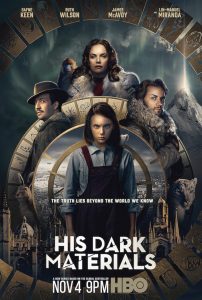 Philip Pullman’s His Dark Materials trilogy (published 1995–2000) is often classified as young-adult fantasy, but it’s deeply layered with high fantasy elements and profound themes.
Philip Pullman’s His Dark Materials trilogy (published 1995–2000) is often classified as young-adult fantasy, but it’s deeply layered with high fantasy elements and profound themes.
Set across parallel worlds, including the primary one that resembles a magical-steampunk version of Oxford circa late 19th century, the story follows Lyra Belacqua and later Will Parry on a journey that involves witches, armoured polar bears, and literal souls taking animal form (dæmons).
It’s a series that explores theology, physics, and coming-of-age, with a narrative both thrilling and philosophical. Notably, Pullman’s work has a critical view of dogmatic religion – the oppressive Magisterium in Lyra’s world evokes the Catholic Church – which made the books controversial in some circles.
A 2007 film adaptation (The Golden Compass) infamously fizzled, considered too watered-down and rushed.
In 2019, however, the BBC and HBO co-produced His Dark Materials as a lavish series, determined to do justice to Pullman’s trilogy over the course of three TV seasons (one per book).
The TV adaptation of His Dark Materials is remarkably faithful in broad strokes. Season 1 covers Northern Lights (The Golden Compass in the US) and was praised for capturing the novel’s spirit of wonder – from the splendour of Jordan College and the city of gyptians, to the wintry grandeur of the far North where armored bear Iorek Byrnison reigns.
Unlike the film, the series retained the book’s original ending (a sombre, tragic climax involving Lyra’s friend Roger) instead of omitting it, and thus maintained the story’s darker emotional impact.
The show’s writers did make some structural tweaks: notably, they introduced Will Parry (the protagonist from Book 2) earlier, weaving scenes of Will and his mother into Season 1 even though he doesn’t meet Lyra until The Subtle Knife. This cross-cutting between worlds helped set up the larger multiverse narrative sooner.
The adaptation also toned down certain explicitly religious references – the Magisterium is depicted as a generic authoritarian theocracy without directly naming the Church, though its function is clear.
Still, compared to the 2007 movie’s extreme soft-pedaling, the series is willing to engage with Pullman’s critique of oppressive religion, merely handling it with a touch more nuance for a broad audience.
Another addition was giving Lord Asriel (played by James McAvoy) a bit more screen presence: for instance, an original standalone episode was planned (though not aired in the main run) to show what Asriel was doing off-page during the events of The Subtle Knife. By and large, however, the adaptation’s changes are minor and respectful.
As one commentator noted, the show was “faithful to the spirit of Pullman’s novels, capturing their sense of wonder far better than the film version”, while only making pragmatic tweaks such as streamlining exposition and slightly reordering events.
Season 2 and 3 continued this approach, condensing some of the more sprawling subplots but delivering almost all the key moments from the books – from the subtle knife’s forging to the harrowing journey to the land of the dead, and the bittersweet finale in the mulefa world. Critically, His Dark Materials received generally positive acclaim, though with a more muted public profile compared to some flashier fantasy shows.
The series’ first season garnered praise for its casting (Dafne Keen as Lyra and Ruth Wilson as the complex Mrs Coulter earned high marks) and its visual realization of elements like dæmons and fantastical locales. It holds about an 80% rating on Rotten Tomatoes, indicating solid approval.
Reviewers often commended it as a welcome corrective to the failed film – “the show captures the books’ sense of wonder and magic”, and crucially, it does not shy away from the darker or more challenging aspects of the story.
Many book readers were particularly appreciative; after decades of waiting, they finally saw a His Dark Materials adaptation that included critical story beats such as the poignant finale of The Golden Compass that the movie studio had cut.
The fidelity was such that even Pullman’s more controversial ideas (like the symbolic “death of authority” climax) were preserved, albeit presented in a family-friendly way. That’s not to say the show was flawless – some critics found the pacing a bit slow in parts or felt that it sometimes struggled to convey the full depth of Pullman’s themes.
And while it was well-regarded, His Dark Materials didn’t become a massive ratings hit in the vein of Game of Thrones. It remained somewhat “under the radar” for general audiences, possibly due to its more cerebral narrative and the YA label.
Nonetheless, in the fantasy community it’s seen as a success. By the end of its third season in 2022, the show had delivered a complete and coherent adaptation of the trilogy, a feat fans celebrated given the complexity of the source.
In summary, BBC/HBO’s His Dark Materials stands as a shining example of a faithful adaptation – one that may not have dominated pop culture conversations, but which earned critical respect and the gratitude of Pullman aficionados for “getting it right” where it mattered.
High fantasy novels have proven to be fertile ground for television, yielding a spectrum of adaptations that vary in tone, target audience, and fidelity.
Some, like Game of Thrones, became cultural touchstones but courted controversy by the end; others, like His Dark Materials, satisfied the faithful without making as loud a splash.
Adaptations such as The Wheel of Time and The Witcher demonstrate the balancing act of streamlining gigantic source material while attempting to please both newcomers and ardent fans.
Internationally, shows like The Twelve Kingdoms reveal that the fascination with parallel worlds and epic destinies is universal, and animation can convey the grandeur of high fantasy as effectively as live action.
Each adaptation must make choices – what to condense, what to alter, how to visualise the fantastical – and each has met with its share of acclaim and criticism.
Yet collectively, they have expanded the television landscape, proving that with enough imagination (and often a considerable budget), the once “unfilmable” pages of high fantasy can indeed spring vividly to life on screen.
Whether one prefers the courtly intrigues of Westeros, the monster-laden trails of the Continent, or the mystical kingdoms beyond the sea, there’s a TV series out there inviting viewers to step through the wardrobe (or portal, or Waygate) into an adventure – remote control in hand, and wonder aplenty on the other side.
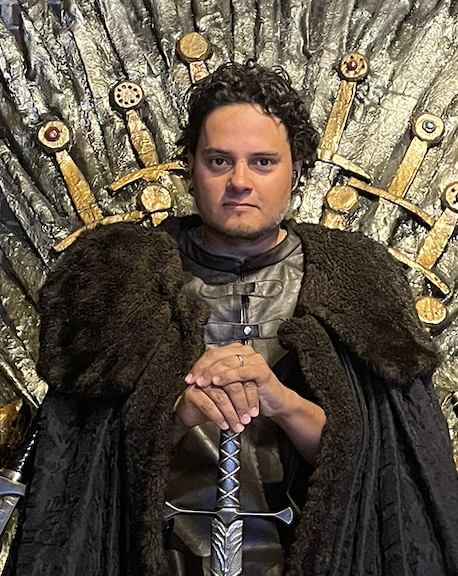
D.P. Martinez is a contemporary fantasy author specialising in urban fantasy and magical realism. He holds an M.A. in English Literature from the University of Greenwich, where he focused on Literary London. His research explored metaphorical representations of London in urban fantasy. He has written hundreds of articles and several books across both fiction and non-fiction.

